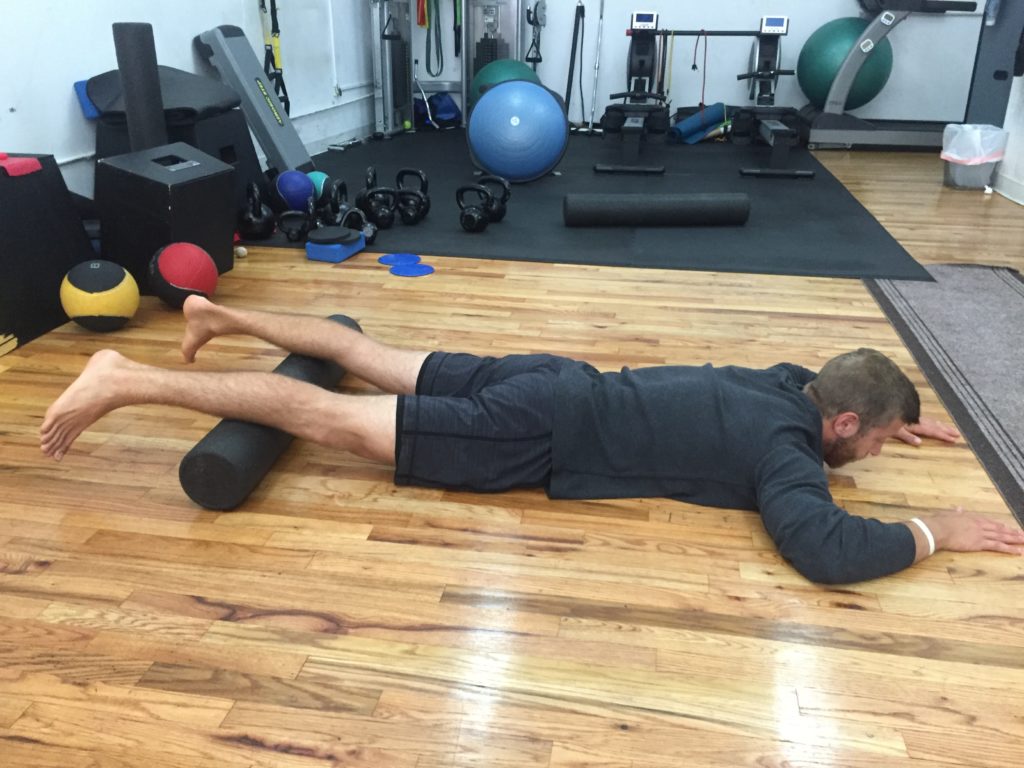Sitting all day can leave the body in less than optimal postures, especially for the strength athlete. Tight hips, internally rotated shoulders, weak glutes, and many other factors can be impacted by the seated posture. There are multiple ways to combat long duration sedentary positions including foam roller sequences.
At BarBend we spend a lot of our day seated, so we wanted to learn a slow-paced foam roller sequence for office workers. To learn more, we contacted Matt Moskowitz, Head of Training at Hell’s Kitchen Wellness, to learn more about his go-to movements for these purposes. Check out the video below with the detailed descriptions below.
Note: All motions shown are for informational purposes only. The information in this article and video is not meant to prevent or cure any disease or injury. It’s always a good idea to consult with a medical professional or trainer before attempting any new training methodology. If you experience any sharp pain while foam rolling or exercising, discontinue movements immediately.
Time Recommendation
This foam rolling sequence is meant to be done at a very slow pace, and it should last upwards of 20-minutes. It’s recommended to use this sequence or routine as an extended stretching protocol, and not a workout. Moskowitz stressed that many office workers will find this sequence to be tough on certain areas of the body they have previous issues with, so easing into movements, or stopping a sequence early when pain is present can be beneficial to progression.
Understanding the Office Worker Sequence
This sequence is catered to the office worker who finds themselves getting tight, or weak areas on the body throughout their sedentary day. As we sit for extended amounts of time some of these factors are inevitable, but we can work to reduce their impact on our postures. Below are a few of the body areas we’re going to work on extending through this sequence.
- Upper Trap/Posterior Neck Extension
- Mid-Back (Thoracic) Exension
- Lower Back (Lumbar Extension)
- Pelvic Extension
Slow progressive extension of these areas will help combat the closed and flexed postures we sit in all day. This is return, can help the way we move throughout your day, in addition to assisting the health of the spine, shoulder, neck, and much more.
Office Worker Sequence
1. Neck Extension
To begin, the athlete will lie completely supine on the floor with the limbs in full extension. The foam roller will be positioned under the neck right at the neck’s arch, or where the traps meet the skull. The athlete will gently lift the chin to the sky and allow the roller to lightly press into the base of the skull and neck.
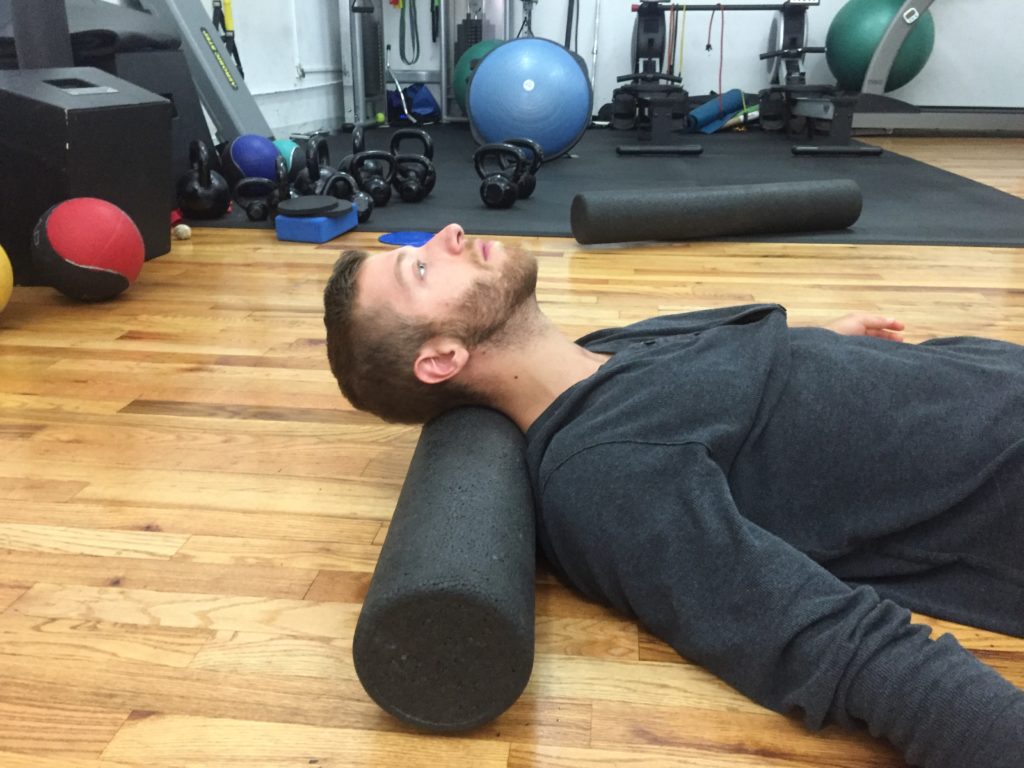
Moskowitz states that this is to be done for relaxation, and there’s no true time limit. He says to gently extend until the neck muscles release, or if you want to use a time, then 2-3 minutes will suffice.
2. Long Abdominal Stretch
The next movement will pick up from the neck extension, and require the athlete to bring their legs into a 90 degree position. Then, the athlete will lift their chin, press their shoulders into the roller, and bring the hips to the sky. Repeat this hip extension, and the athlete will work to achieve as much arch in the spine as possible without pain, or discomfort. Moskowitz recommends to aim for a full 3-4 minutes of stretch in this position.
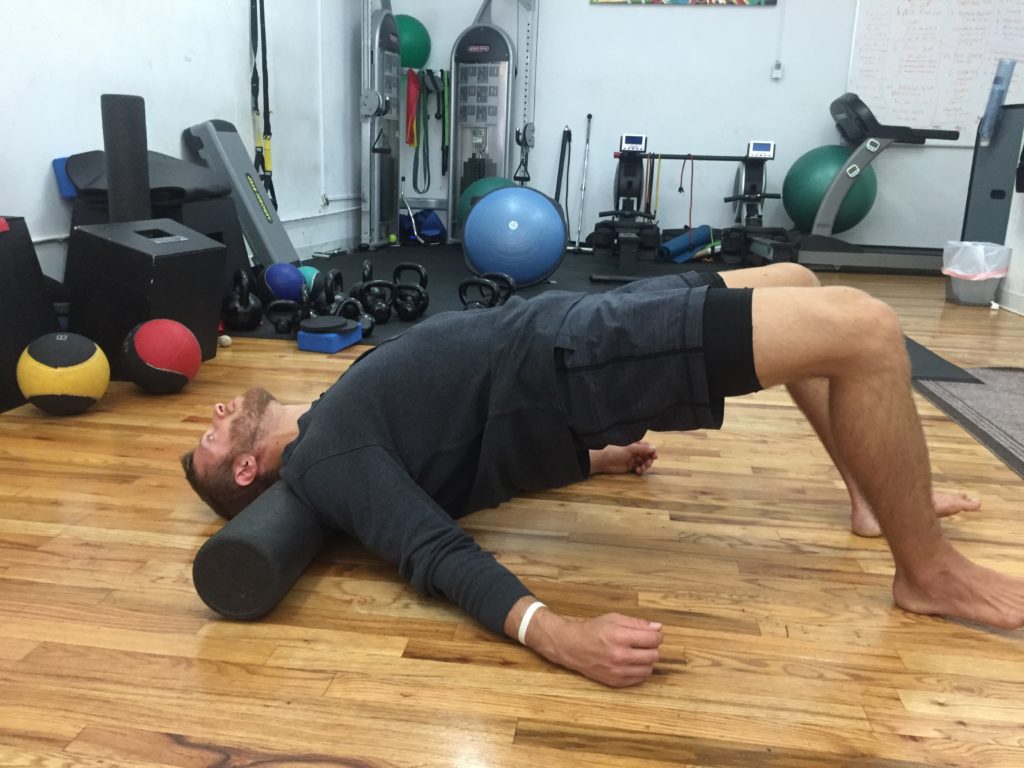
3. Long Thoracic Extension
Once an athlete has hit the 3-4 minute mark of the abdominal strength, then they’ll extend their arms and bring their shoulders to the floor. Moskowitz says that this stretch should be taken very slowly, and for some, this may be where they stop the sequence to progress into further movements. Similar to the abdominal stretch, the athlete relax into this position for 3-4 minutes.
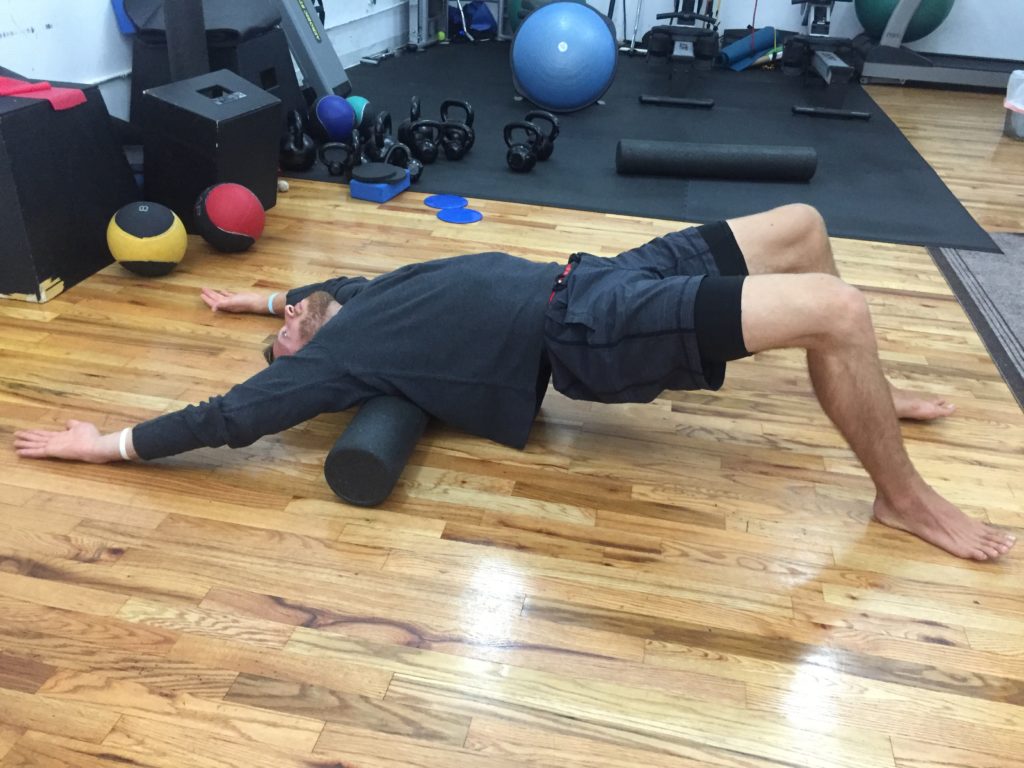
4. Long Lumbar Extension
Part 1: From the thoracic extension, the athlete will then roll further down the roller until their lumbar, or lower back fully is in contact. Then, the athlete will begin to relax their pelvis slowly.
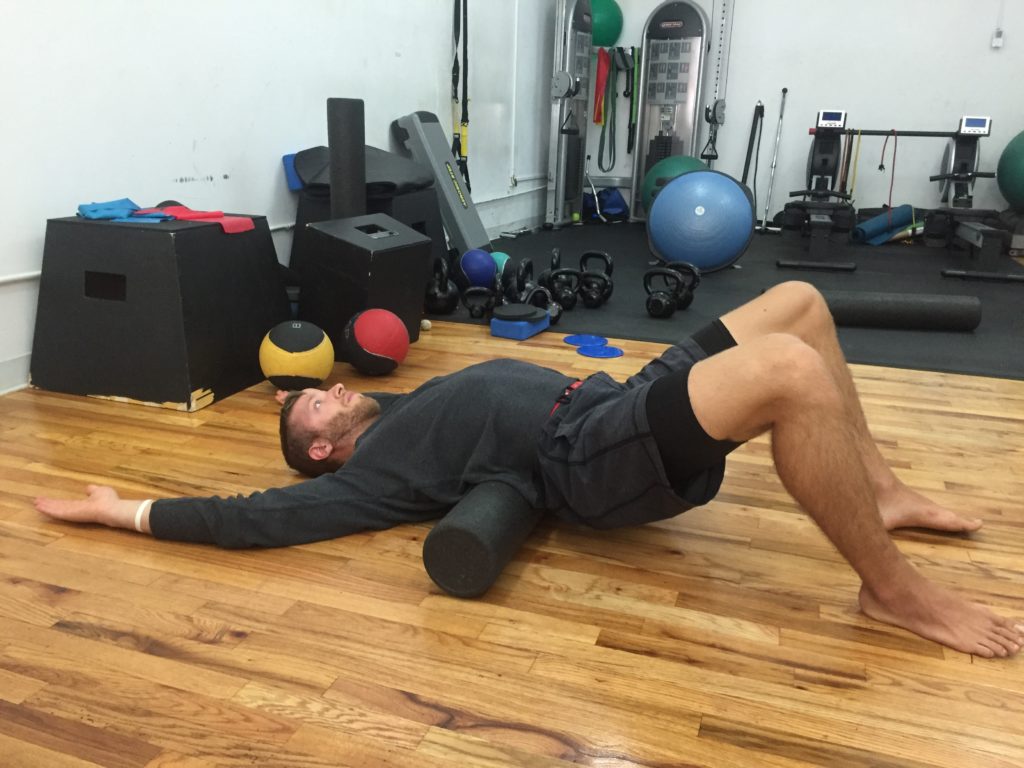
Part 2: Once the athlete has reached a comfortable relaxed position, then they’ll extend their legs and fully relax the pelvis. The athlete’s goal should be to drop the pelvis, while relaxing the upper body. Hold this position for 3-4 minutes.
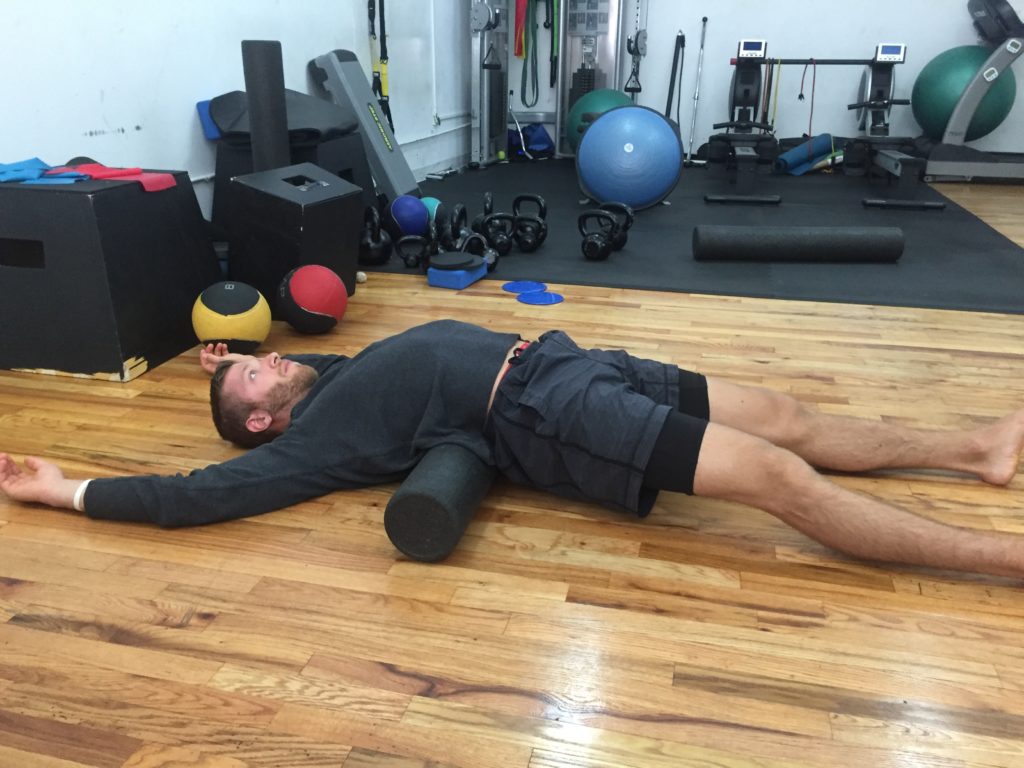
Moskowitz stresses that this area is often very troublesome for those with tight lower backs. If there’s any pain or severe discomfort present, then consultation with a medical professional should be sought out.
5. Quad & Psoas Extension
After 3-4 minutes have passed, the athlete will continue to roll down the roller until their tailbone sits atop of it. Once the tailbone is in contact with the roller, then the athlete will relax the legs and upper body to achieve a lower back stretch. This position will be held for a 3-4 minute time frame.
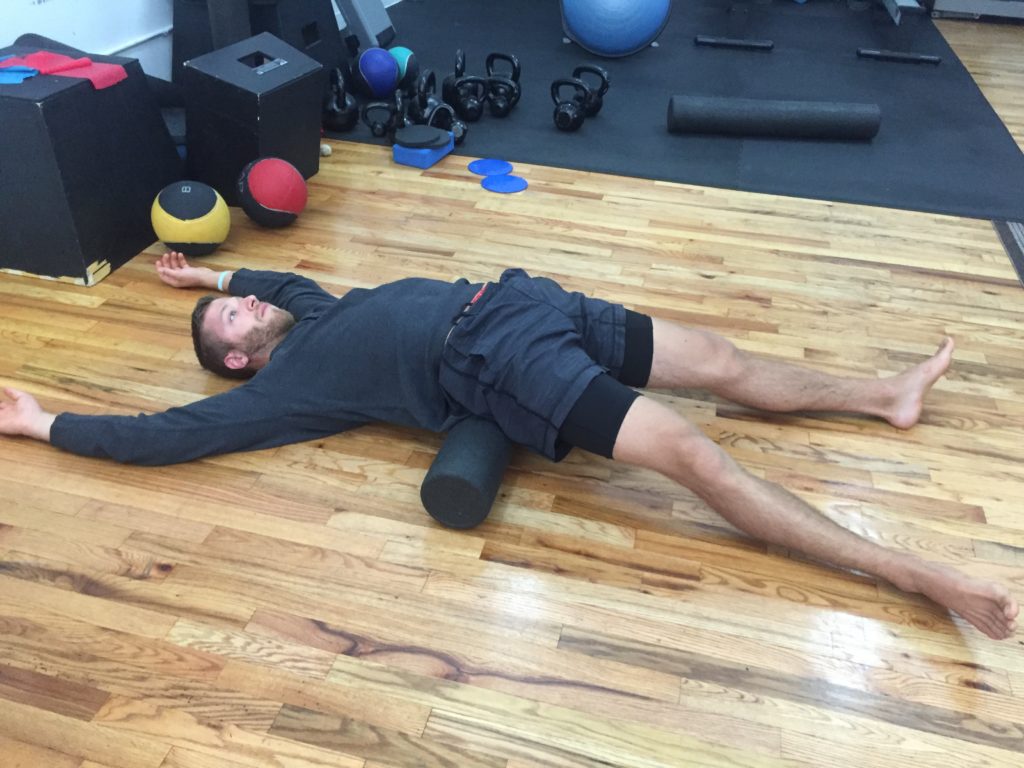
6. Additional Pelvic Stretch
For this movement, the athlete will roll to their stomach and relax fully flat on the floor. Position the foam roller under shins and relax the pelvis into the floor. Moskowitz says to hold this position for 1-2 minutes.
